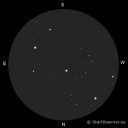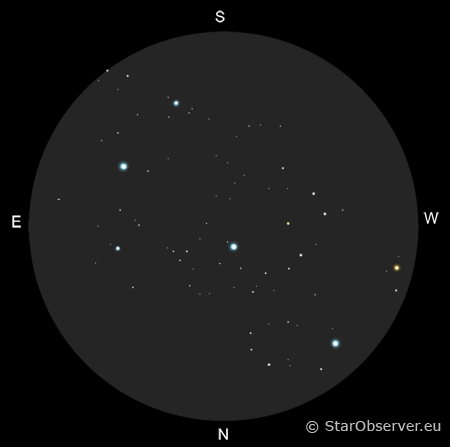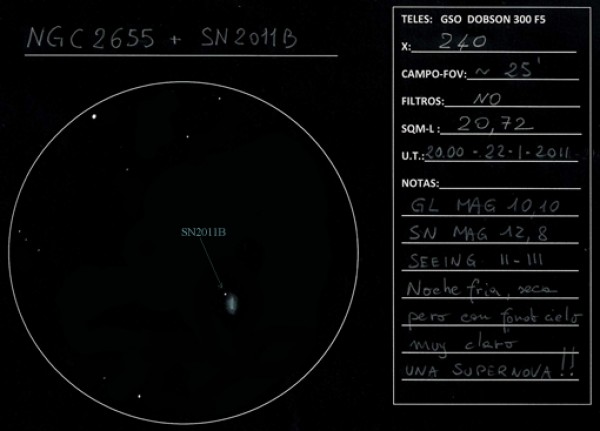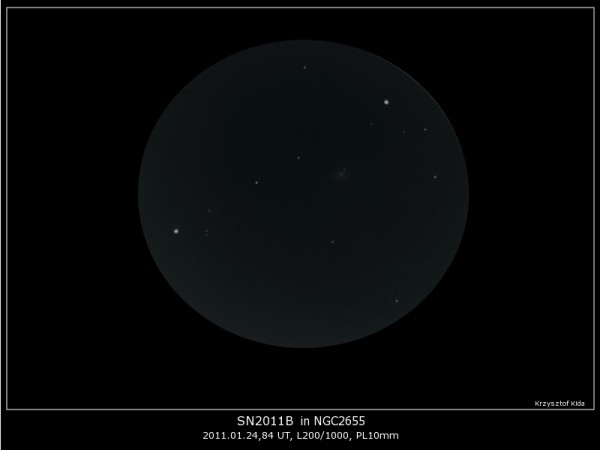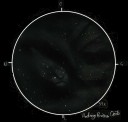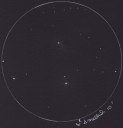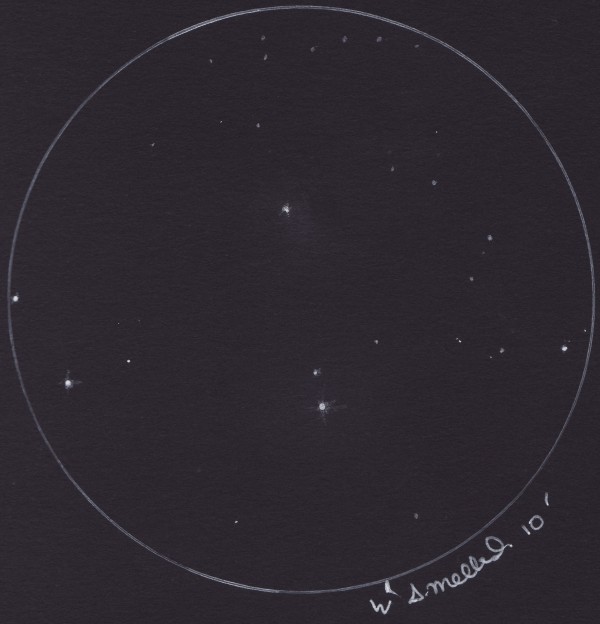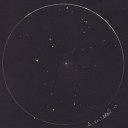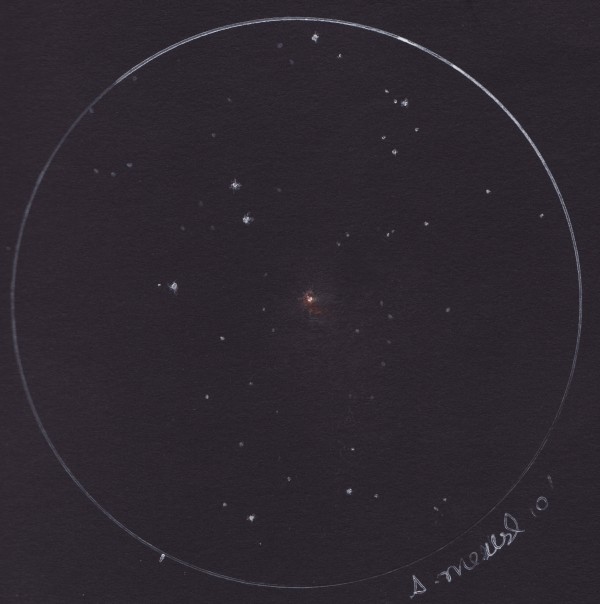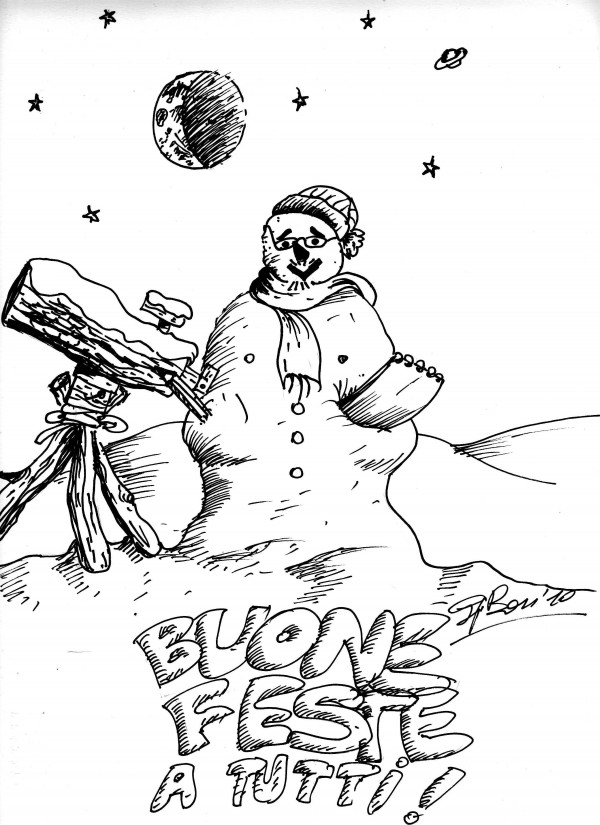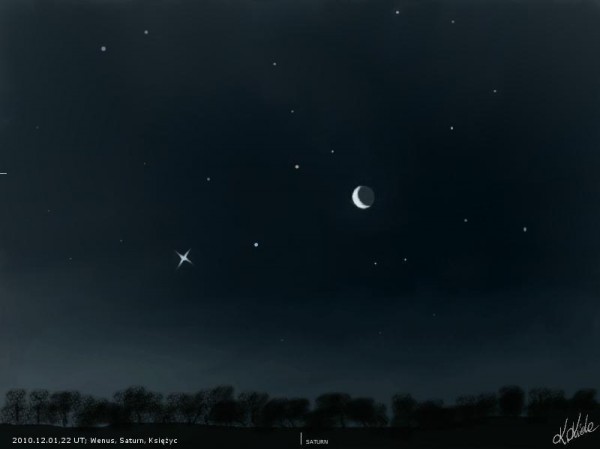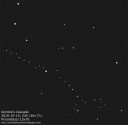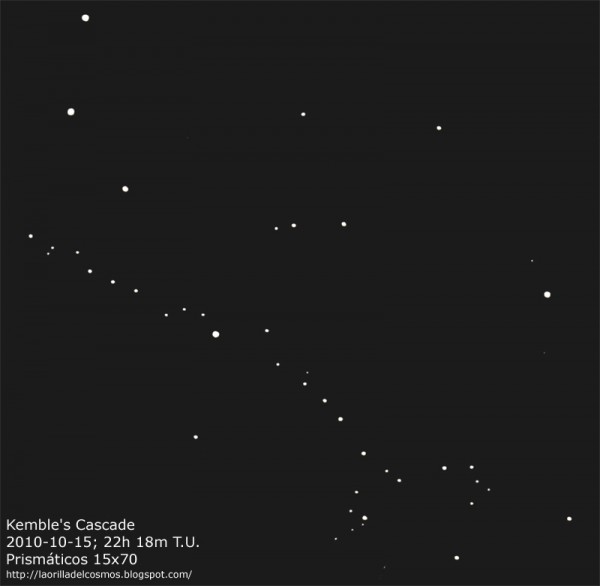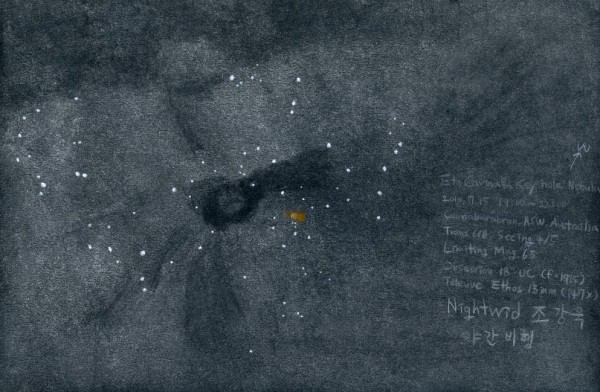
Eta Carina star & Key hole nebula
2010.7.15 19:00~22:00
Coonabarabran, NSW, Australia
Trans 6/6, Seeing 4/5, Limiting Mag. 6.5
Obssesion 18″ UC (f=1915mm)
Televue Ethos 13mm (147x)
Black paper(A4 size) and pastel.
Last July, I went to Australia with obssesion 18″ UC to observing star.
(My hometown is S.Korea)
During my observation trip, lots of cloud covered with Australia.
So we rented a car, and moved everyday to find clear sky. (Goondiwindi, Miles, Coonabarabran)
Eta Carina star is incredible!!!
It is not difficulty for observe erupted materials from Eta Carina star.
I did’n expect observing “Giant eruptions”, but I observed this feature with 18″ UC and extremly clear sky
(I saw belt of venus and zodiacal light every night)
Key hole nebula is clear and impressive dark nebula beside Eta Carina star.
Kanguk Cho, Nightwid
